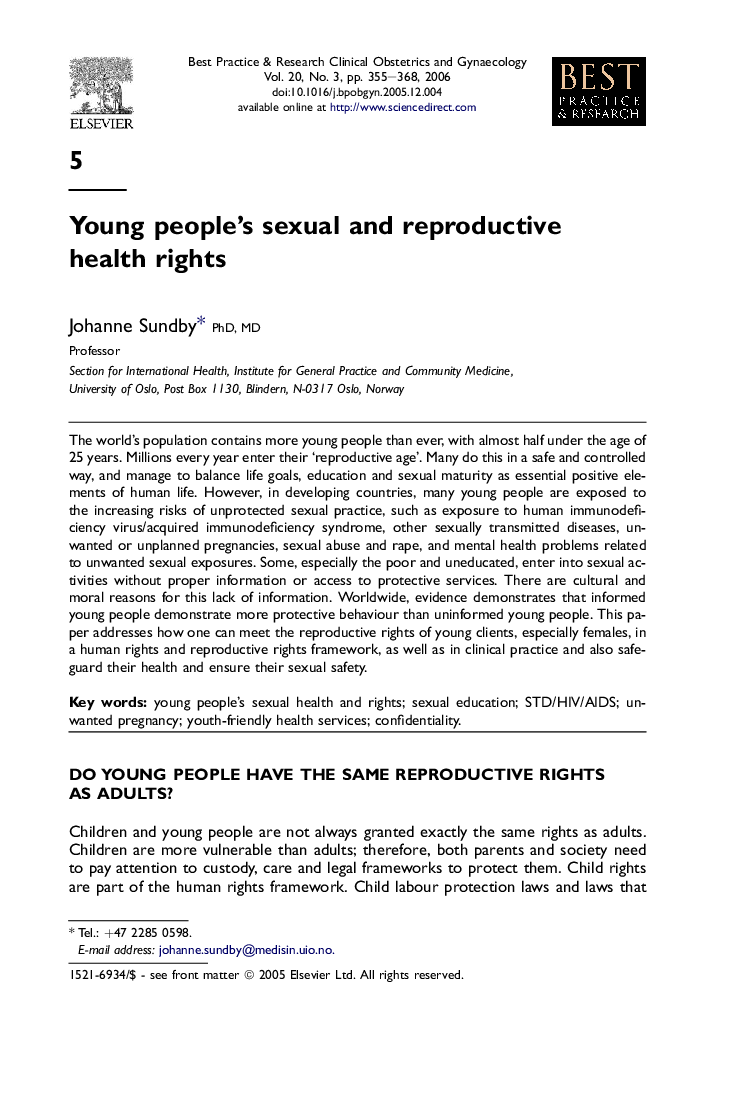| Article ID | Journal | Published Year | Pages | File Type |
|---|---|---|---|---|
| 3908055 | Best Practice & Research Clinical Obstetrics & Gynaecology | 2006 | 14 Pages |
The world's population contains more young people than ever, with almost half under the age of 25 years. Millions every year enter their ‘reproductive age’. Many do this in a safe and controlled way, and manage to balance life goals, education and sexual maturity as essential positive elements of human life. However, in developing countries, many young people are exposed to the increasing risks of unprotected sexual practice, such as exposure to human immunodeficiency virus/acquired immunodeficiency syndrome, other sexually transmitted diseases, unwanted or unplanned pregnancies, sexual abuse and rape, and mental health problems related to unwanted sexual exposures. Some, especially the poor and uneducated, enter into sexual activities without proper information or access to protective services. There are cultural and moral reasons for this lack of information. Worldwide, evidence demonstrates that informed young people demonstrate more protective behaviour than uninformed young people. This paper addresses how one can meet the reproductive rights of young clients, especially females, in a human rights and reproductive rights framework, as well as in clinical practice and also safeguard their health and ensure their sexual safety.
